It’s not surprising that the most famous Neoclassical painting was produced by the preeminent Neoclassical artist of the late 18th and early 19th centuries.
Jacques-Louis (1748-1825) permanently made a name for himself during a time that a revolution was brewing in France, and his most famous painting might have been a prelude to what was to come.
Let’s take a closer look at some of the most interesting facts about “Oath of the Horatii” by Jacques-Louis David, a Neoclassical painting considered to be the artist’s ultimate masterpiece.
1. It was completed in Rome, 4 years after his 5-year stay in the city
Jacques-Louis David won the Grand Prix of Rome in 1774, a prestigious scholarship that was awarded by the French Academy and which allowed emerging artists to study in Rome for 5 years at expense of the state.
The artist studied in Rome for 5 years between 1775 and 1780 and was deeply impressed by the writings of Johann Joachim Winckelmann (1717–1768), a man who is considered to be the founding father of Neoclassical art.
Deeply influenced by classical subjects, he produced this work when he visited one of his own pupils in Rome in the year 1784, just 4 years after his stay in the Italian capital.
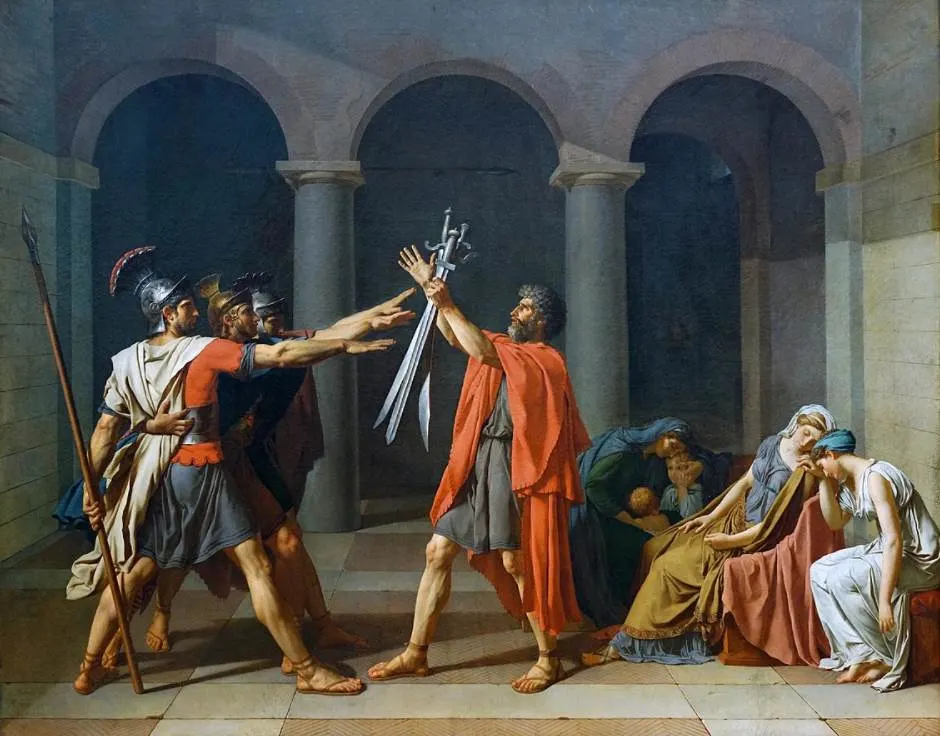
2. It was commissioned by the King’s assistant but his intentions backfired
David was never going to become a frivolous Rococo artist, although he was initially mentored by François Boucher (1703-1770), the most renowned artist of the Rococo era. His political views didn’t allow him to create trivial artworks.
Oath of the Horatii was commissioned by an assistant of King Louis XVI named Charles-Claude Flahaut de la Billaderie. His idea was for a painting that would strengthen the loyalty to the king in which the 3 brothers represented the French people who honored their father.
David created his own version in which the 3 brothers can be seen saluting their father, something that was interpreted as loyalty to the republic during the 1780s.

This was a period shortly before the start of the French Revolution, which not only toppled the monarchy but also resulted in the execution of the king. We can only assume that didn’t as exactly what the king’s assistant had in mind.

3. It depicts a story that allegedly took place during the 7th century B.C.
The story from which the painting’s subject is derived allegedly took place in the 7th century B.C. during the Kingdom era of Rome. 3 brothers of the Horatius family were chosen to fight a battle against 3 brothers of the Curiatii, a family that belonged to another city called Alba Longa.
This type of fight was chosen to decide who won the battle without both armies getting involved. The painting depicts the moment that the 3 brothers salute their father, shortly before they depart to fight the 3 brothers of the Curiatii.
The story was written by Livy (59 B.C.-17 A.D.), a Roman historian who lived during the transition of the Roman Republic to the Roman Empire, in sections 24 to 26 of his first book.
4. The story has a dramatic ending which also involved the brother’s sister
So what happened during the battle between the 3 brothers and warriors of both cities?
According to Livy, only one brother of the Horatii survived the initial fight. This man named Publius then used several tactics to separate the brothers of the Curiatii and killed them one by one to become victorious.
Apart from the 3 brothers saluting their father, we can also see a group of women on the righthand side of the painting. The weeping woman wearing yellowish clothes is named Camilla, and she didn’t just cry because she was about to potentially lose her brothers.
The twist to the story is that she was engaged to one of the brothers of the Curiatii family. According to Livy, when Publius saw her crying over the loss of her future husband, he killed her as well.
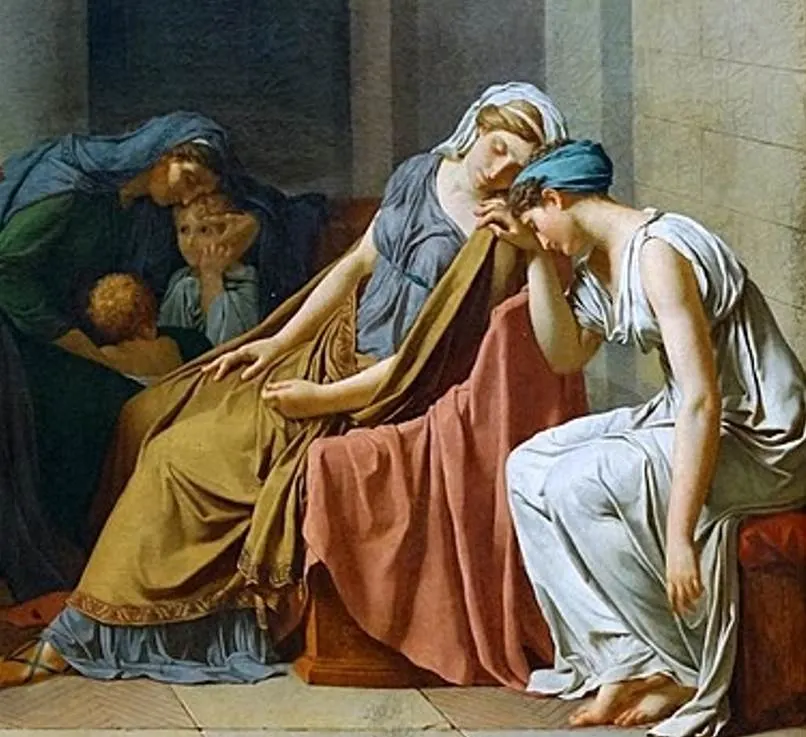
5. It’s one of the great attractions of the Louvre Museum in Paris
Because David completed the painting in Rome, it didn’t make it to the Paris Salon of 1784. It was instead displayed at the Paris Salon of 1785 and reportedly placed inside an obscure room to avoid attention to it.
After all, the tensions in France were running high and an allegory of 3 warriors pledging allegiance to the republic, which is how the painting was interpreted at the time, was quite dangerous indeed.
It didn’t stop the revolution from happening, followed by the reign of Napoleon Bonaparte. David became the personal painter of the French Emperor and his painting initially decorated the Musée Napoleon, the Louvre Museum.
Oath of the Horatii is still one of the most famous paintings at the Louvre today and is widely considered to be the epitome of Neoclassical art.
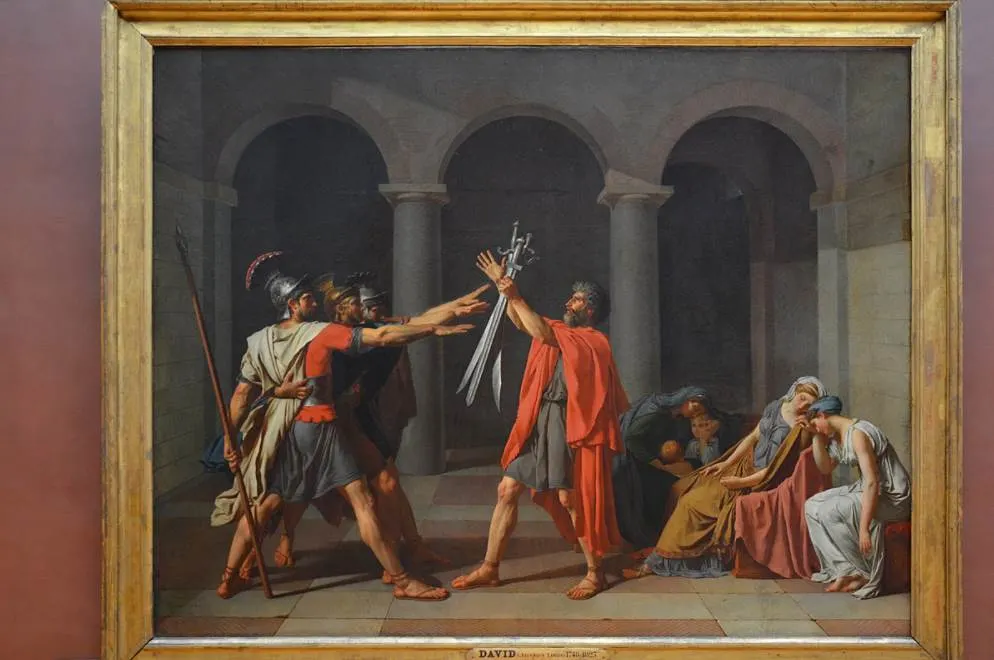
More interesting facts about Oath of the Horatii by Jacques-Louis David
6. An epic painting that was intended to glorify the king had to be produced at a monumental scale. Although David painted his own version of the story, he did paint an enormous work.
This painting has dimensions of 329.8 × 424.8 centimeters (129.8 × 167.2 inches)
7. To say that David intentionally painted this work in order to serve as a propaganda statement is perhaps too farfetched, but the painting does have an incredibly dark side.
The brothers can be seen extending their arms with the palm facing down and fingers closed. This gesture is referred to as the Roman salute, a symbol of both the Roman Republic and the Roman Empire. In modern times, this is commonly known as a symbol of Fascism.
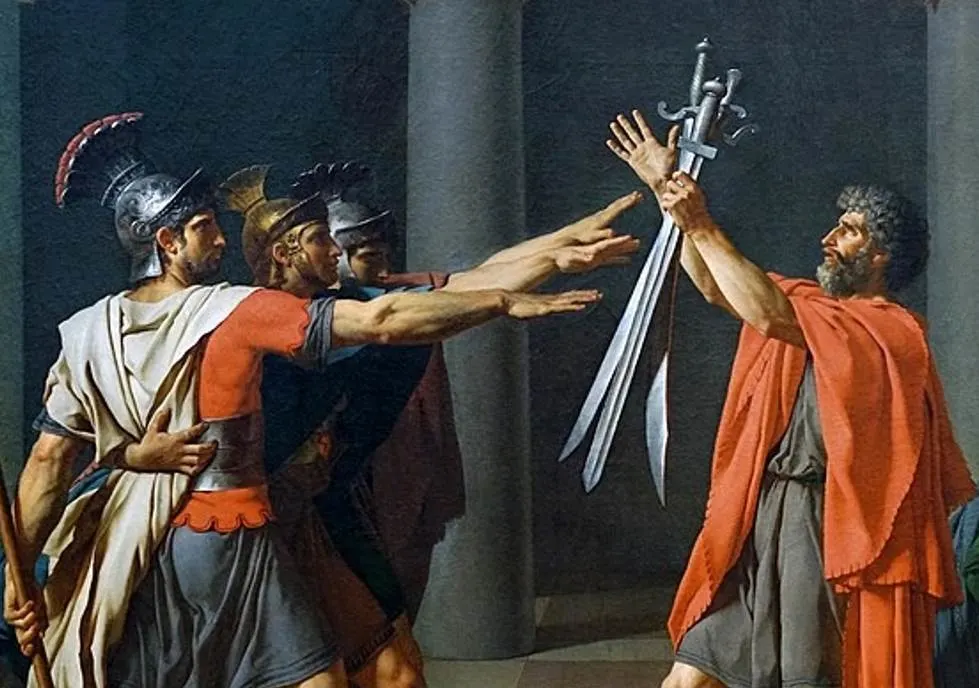
8. One of the three swords held by the father is straight while the other two are curved. This might be seen as a foreshadowing of the fact that only one brother will survive the battle.
9. The contrast between the firm men ready to confront their enemy in a battle to the death and the weeping women and children on the right couldn’t be greater.
The artist also depicted the men much larger than the women, a symbolic sign of masculinity and patriotism. The father is even facing his back to the women, completely shutting them out of the oath.
10. Jacques-Louis David clearly understood the importance of this painting, especially considering the extreme political tensions that were going on in France at the time.
That’s why he carefully planned this painting, something emphasized by the fact that he made several studies, including one of Camilla and a full drawing of the painting.
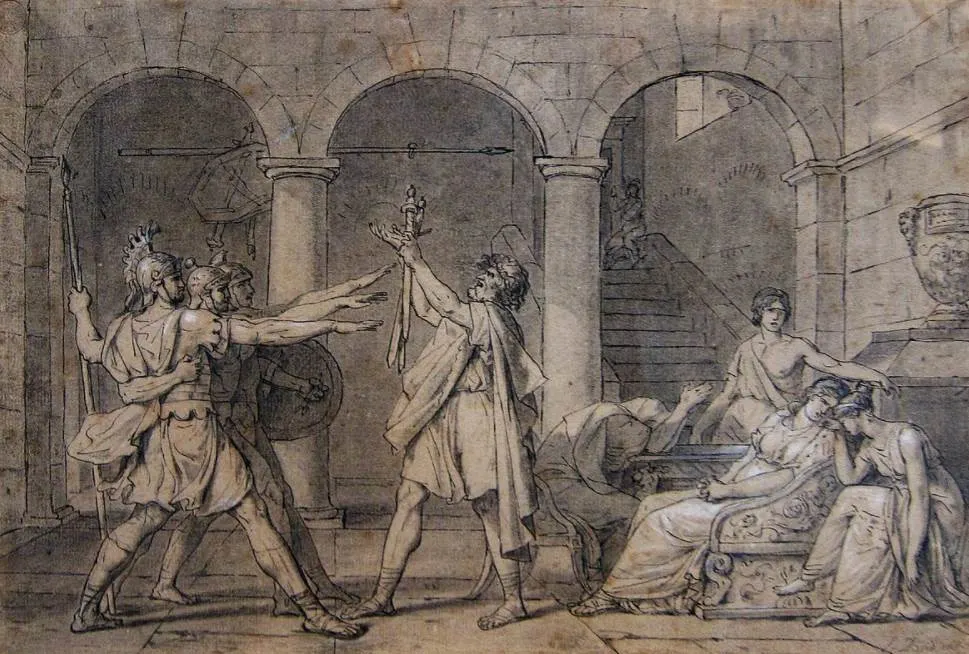
11. Oath of the Horatii is considered to be the epitome of Neoclassical paintings because it features all the trademarks that are associated with this art movement.
The background appears to be empty which highlights the figures in the foreground, the artist integrated as many straight lines as he could, and the brushstrokes are invisible. This is an immense contrast to the Rococo style which dominated shortly before this work was produced.
12. This painting wasn’t the only work that David produced which featured a political undertone that resonated with the cause of the revolutionaries. He produced a work called “The Lictors Bring to Brutus the Bodies of His Sons” between 1787 and 1789, just before the French Revolution broke out.
The story of this painting depicts the remarkable story of the founder of the Roman Republic in the 6th century B.C. He discovered that his own sons were plotting against him to restore the monarchy.
He decided to have his sons executed to preserve the Roman Republic. Just a few years after he painted this work, Jacques-Louis David issued his vote in favor of the execution of King Louis XVI in the National Assembly.

